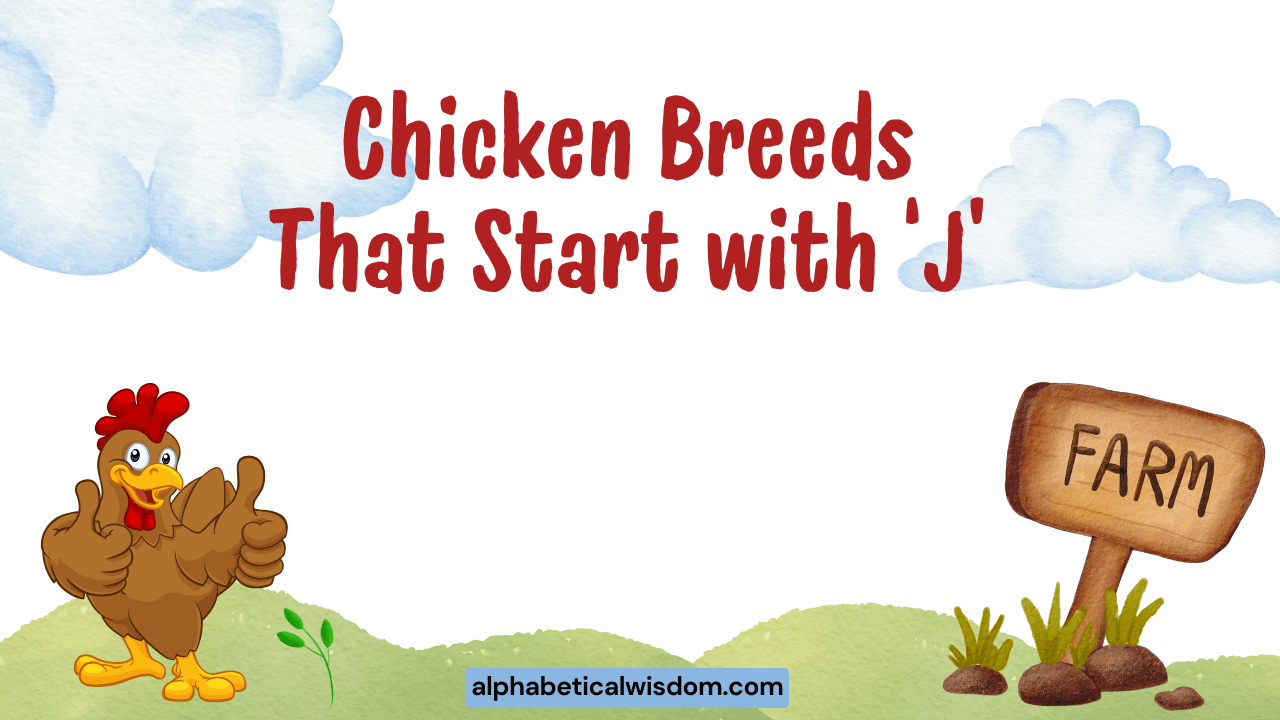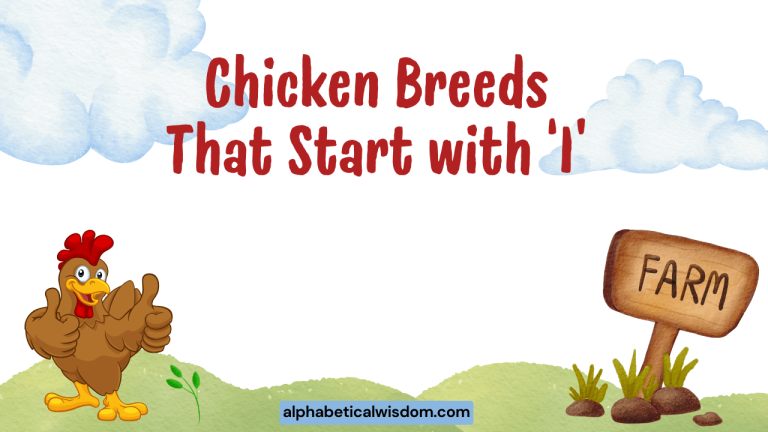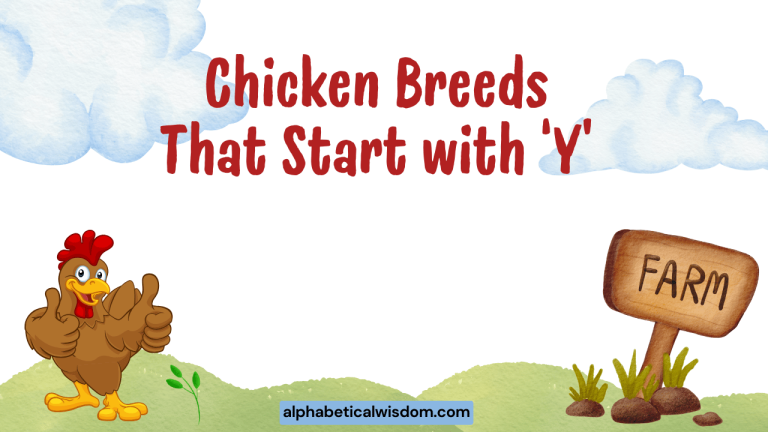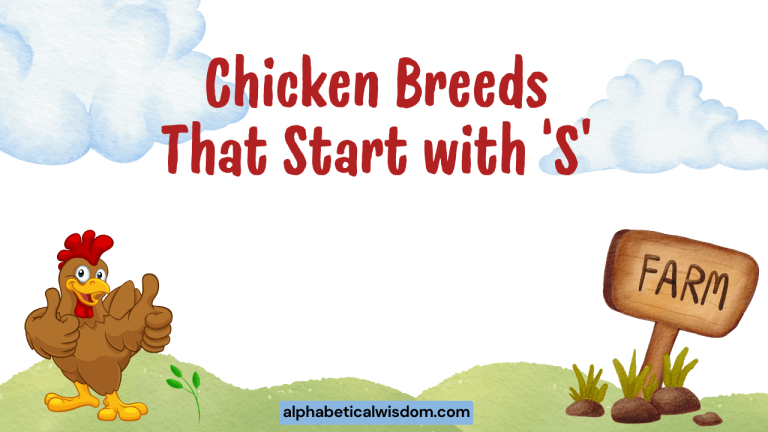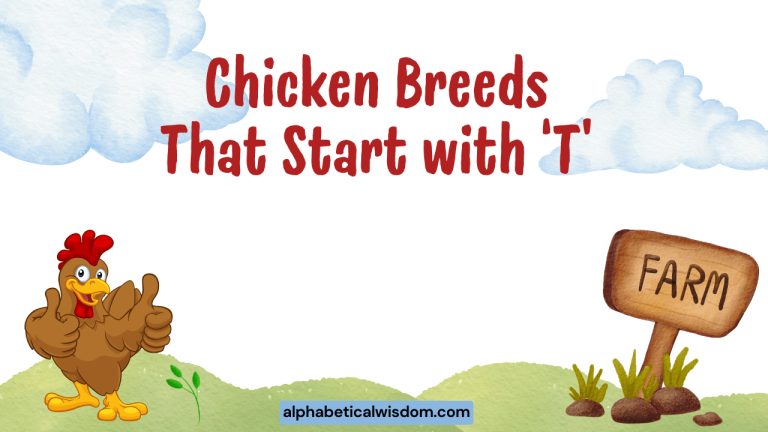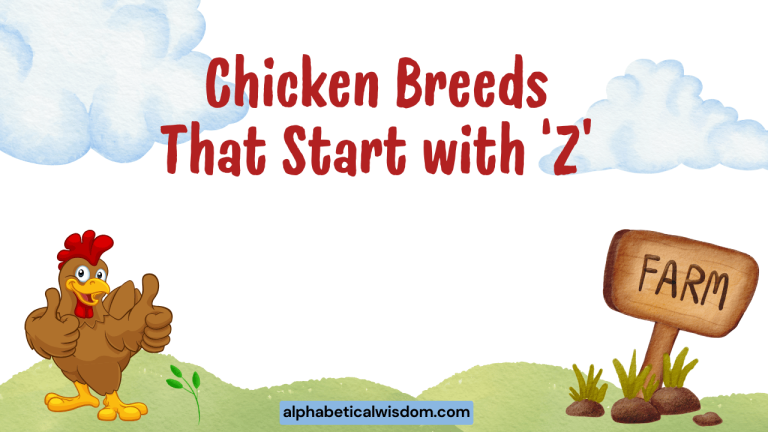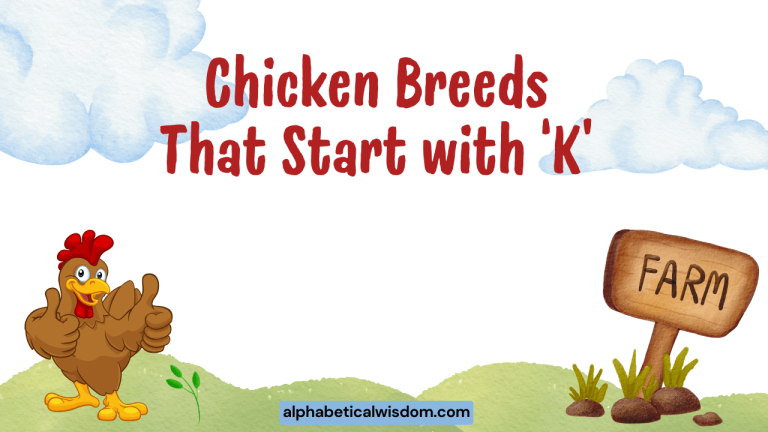Chicken Breeds: A Grammatical Exploration of Noun Usage
Understanding the names of chicken breeds isn’t just about poultry knowledge; it’s also a great way to explore English grammar, particularly the use of nouns. Proper nouns, common nouns, collective nouns – all come into play when discussing different chicken breeds.
This article will delve into the grammatical aspects of chicken breed names, examining how they function in sentences and what grammatical rules apply. Whether you’re a poultry enthusiast, a grammar aficionado, or simply looking to improve your English skills, this comprehensive guide will offer valuable insights and practical examples.
Table of Contents
- Introduction
- Definition and Classification of Nouns
- Structural Breakdown of Chicken Breed Names
- Types of Nouns in Chicken Breed Names
- Examples of Chicken Breed Names and Noun Usage
- Usage Rules for Nouns in Chicken Breed Contexts
- Common Mistakes with Noun Usage
- Practice Exercises
- Advanced Topics: Noun Phrases and Clauses
- FAQ: Frequently Asked Questions
- Conclusion
Definition and Classification of Nouns
A noun is a word that represents a person, place, thing, or idea. Nouns are fundamental building blocks of sentences, serving as subjects, objects, complements, and modifiers. Understanding nouns is crucial for constructing grammatically correct and meaningful sentences. In the context of chicken breeds, nouns are used to name the breeds themselves, their characteristics, and related concepts.
Nouns can be classified into several categories based on their meaning and function:
- Proper Nouns: These are specific names of people, places, or things, and they are always capitalized. For example, Java (as in Java Chicken) or Jersey Giant.
- Common Nouns: These are general names for people, places, things, or ideas. For example, chicken, breed, or farm.
- Concrete Nouns: These are nouns that refer to tangible things that can be perceived by the senses. For example, feathers, eggs, or comb.
- Abstract Nouns: These are nouns that refer to intangible concepts, ideas, or qualities. For example, heritage, vigor, or beauty.
- Collective Nouns: These are nouns that refer to a group of things or people. For example, flock or brood.
- Compound Nouns: These are nouns made up of two or more words. For example, chicken coop or egg production.
Structural Breakdown of Chicken Breed Names
Chicken breed names often follow specific structural patterns. These patterns can involve single nouns, combinations of nouns, or nouns modified by adjectives.
Understanding these structures helps in analyzing the grammatical role of each word within the breed name.
Common structures include:
- Single Noun: A breed name consisting of a single noun, usually a proper noun. Examples are rare with breeds starting with ‘J’.
- Adjective + Noun: A breed name consisting of an adjective modifying a noun. For example, Jersey Giant (adjective “Jersey” modifying the noun “Giant”).
- Noun + Noun (Compound): A breed name consisting of two nouns combined to form a compound noun. Examples are rare with breeds starting with ‘J’.
The structure of a chicken breed name can provide clues about its origin, characteristics, or purpose. For example, a breed name including a geographical location often indicates the breed’s place of origin.
Types of Nouns in Chicken Breed Names
Proper Nouns
Proper nouns are specific names of people, places, or things. They are always capitalized. In the context of chicken breeds, proper nouns often refer to the place of origin of the breed or a person associated with its development. Examples include Java (referring to the island of Java) and Jersey (referring to the state of New Jersey).
Proper nouns help to distinguish a specific breed from other breeds. They provide unique identifiers that are essential for accurate communication and documentation.
Common Nouns
Common nouns are general names for people, places, things, or ideas. They are not capitalized unless they begin a sentence.
In chicken breed names, common nouns often describe a characteristic of the breed, such as its size, color, or purpose. For example, in “Jersey Giant,” “Giant” is a common noun describing the large size of the breed.
Common nouns provide descriptive information about the breed, making it easier to understand its traits and characteristics.
Compound Nouns
Compound nouns are formed when two or more words are joined together to create a single noun. These can be open (separate words), closed (one word), or hyphenated.
Due to the scarcity of chicken breeds starting with “J,” compound nouns are less frequent, but conceptually, terms like “chicken coop” or “egg production” could be relevant in discussing the context of raising that breed.
Compound nouns can provide more specific and nuanced descriptions than single nouns alone.
Collective Nouns
Collective nouns refer to a group of things or people. While not typically found directly within the breed name itself, they are used when referring to groups of chickens of a particular breed.
Examples include “flock of Javas” or “brood of Jersey Giants.”
Collective nouns help to describe the quantity and grouping of chickens.
Examples of Chicken Breed Names and Noun Usage
This section provides examples of chicken breed names, focusing on the grammatical function of the nouns within those names. Due to the limited number of chicken breeds starting with the letter “J,” the examples will be more focused on contextual usage and grammatical roles.
Proper Noun Examples
The following table illustrates the use of proper nouns in the context of chicken breeds. It shows how proper nouns, often geographical in origin, are used within sentences.
| Sentence | Proper Noun | Function |
|---|---|---|
| The Java chicken is a dual-purpose breed. | Java | Identifies a specific breed; subject of the sentence. |
| We visited a farm that raises Java chickens. | Java | Identifies a specific breed; modifies “chickens.” |
| The Jersey Giant is known for its impressive size. | Jersey Giant | Identifies a specific breed; subject of the sentence. |
| Have you ever seen a Jersey Giant rooster? | Jersey Giant | Identifies a specific breed; object of the verb “seen.” |
| The Jersey Giant’s origin is in New Jersey. | Jersey Giant’s | Possessive; shows ownership. |
| Many farms in Jersey raise chickens. | Jersey | Identifies a specific place; object of the preposition “in.” |
| The history of the Java chicken is interesting. | Java | Identifies a specific breed; modifier. |
| I want to learn more about the Java breed. | Java | Identifies a specific breed; modifier. |
| The Jersey Giant chicken is a popular breed. | Jersey Giant | Identifies a specific breed; subject of the sentence. |
| He bought a Jersey Giant pullet. | Jersey Giant | Identifies a specific breed; modifies “pullet.” |
| The Java chicken is an American breed. | Java | Identifies a specific breed; subject of the sentence. |
| She prefers the Java chicken over other breeds. | Java | Identifies a specific breed; object of the verb “prefers.” |
| The Jersey Giant is a large bird. | Jersey Giant | Identifies a specific breed; subject of the sentence. |
| They admired the Jersey Giant’s size. | Jersey Giant’s | Possessive; shows ownership. |
| The Java chicken lays brown eggs. | Java | Identifies a specific breed; subject of the sentence. |
| He is breeding Java chickens. | Java | Identifies a specific breed; modifies “chickens.” |
| The Jersey Giant is known for its meat. | Jersey Giant | Identifies a specific breed; subject of the sentence. |
| She is raising Jersey Giant chicks. | Jersey Giant | Identifies a specific breed; modifies “chicks.” |
| The Java chicken is a rare breed now. | Java | Identifies a specific breed; subject of the sentence. |
| He is interested in preserving the Java. | Java | Identifies a specific breed; object of the preposition “in.” |
| The Jersey Giant has black plumage. | Jersey Giant | Identifies a specific breed; subject of the sentence. |
| She is showing her Jersey Giant at the fair. | Jersey Giant | Identifies a specific breed; object of the verb “showing.” |
| The Java chicken is a good forager. | Java | Identifies a specific breed; subject of the sentence. |
| He is selling Java eggs. | Java | Identifies a specific breed; modifies “eggs.” |
| The Jersey Giant is a heritage breed. | Jersey Giant | Identifies a specific breed; subject of the sentence. |
| She is proud of her Jersey Giant. | Jersey Giant | Identifies a specific breed; object of the preposition “of.” |
This table demonstrates how proper nouns are used to specifically name and identify chicken breeds, playing various roles within sentences.
Common Noun Examples
The following table illustrates the use of common nouns in sentences related to chicken breeds. These nouns describe general characteristics or aspects of poultry farming.
| Sentence | Common Noun | Function |
|---|---|---|
| The chicken is a domestic fowl. | chicken | General term for the bird; subject of the sentence. |
| The breed is known for its egg production. | breed | General term for a type of chicken; subject of the sentence. |
| The rooster crows in the morning. | rooster | General term for a male chicken; subject of the sentence. |
| The hen lays eggs daily. | hen | General term for a female chicken; subject of the sentence. |
| The chick is small and fluffy. | chick | General term for a young chicken; subject of the sentence. |
| The farm raises various breeds of chickens. | farm | General term for an agricultural setting; subject of the sentence. |
| The eggs are collected every morning. | eggs | General term for the product of hens; subject of the sentence. |
| The feathers are soft and colorful. | feathers | General term for the plumage of a chicken; subject of the sentence. |
| The comb is red and prominent. | comb | General term for the fleshy crest on a chicken’s head; subject of the sentence. |
| The coop is where the chickens sleep. | coop | General term for a chicken house; subject of the sentence. |
| The feed is essential for their growth. | feed | General term for chicken food; subject of the sentence. |
| The water is always available for the chickens. | water | General term for a necessary resource; subject of the sentence. |
| The meat from this breed is delicious. | meat | General term for chicken flesh; subject of the sentence. |
| The flock of chickens roams freely. | flock | General term for a group of chickens; subject of the sentence. |
| The brood of chicks follows the hen. | brood | General term for a group of chicks; subject of the sentence. |
| The farmer cares for the chickens. | farmer | General term for a person who raises chickens; subject of the sentence. |
| The market sells fresh eggs. | market | General term for a place to sell goods; subject of the sentence. |
| The pen houses the chickens. | pen | General term for an enclosure; subject of the sentence. |
| The soil is rich in nutrients. | soil | General term for the ground; subject of the sentence. |
| The sun provides warmth for the chickens. | sun | General term for the star that provides light and heat; subject of the sentence. |
| The wind blows through the coop. | wind | General term for moving air; subject of the sentence. |
| The garden is where the chickens forage. | garden | General term for a cultivated area; subject of the sentence. |
| The grain is used as chicken feed. | grain | General term for a type of food; subject of the sentence. |
| The nest is where the hen lays her eggs. | nest | General term for a place where birds lay eggs; subject of the sentence. |
| The yard is spacious for the chickens. | yard | General term for an outdoor area; subject of the sentence. |
This table illustrates the use of common nouns in sentences related to chicken breeds, showing how they describe general aspects of poultry farming.
Compound Noun Examples
The following table illustrates the use of compound nouns in sentences related to chicken breeds, although direct examples within specific breed names starting with “J” are limited. Instead, it shows how compound nouns are used in the broader context of chicken farming.
| Sentence | Compound Noun | Function |
|---|---|---|
| The chicken coop provides shelter for the hens. | chicken coop | Shelter for chickens; subject of the sentence. |
| Egg production is high with this breed. | Egg production | The act of laying eggs; subject of the sentence. |
| The feed store sells chicken feed. | feed store | A store that sells animal feed; subject of the sentence. |
| The water trough is always full. | water trough | A container for water; subject of the sentence. |
| The egg carton holds a dozen eggs. | egg carton | A container for eggs; subject of the sentence. |
| The chicken wire keeps the chickens in the yard. | chicken wire | A type of wire mesh; subject of the sentence. |
| The farmhouse overlooks the chicken coop. | farmhouse | A house on a farm; subject of the sentence. |
| The sunflower seeds are a treat for the chickens. | sunflower seeds | Seeds from a sunflower; subject of the sentence. |
| The chickenpox vaccine is important. | chickenpox | A disease; subject of the sentence. |
| The eggshell is fragile. | eggshell | The outer covering of an egg; subject of the sentence. |
| We need more chicken feed. | chicken feed | Food for chickens; object of the verb “need”. |
| The chicken farmer is dedicated. | chicken farmer | Farmer who raises chickens; subject of the sentence. |
| Clean the water dish regularly. | water dish | Dish for water; object of the verb “clean”. |
| The chicken breast is a popular cut of meat. | chicken breast | A cut of chicken meat; subject of the sentence. |
| The chicken dance is a fun activity. | chicken dance | A dance resembling chicken movements; subject of the sentence. |
| Use a clean egg tray. | egg tray | Tray for holding eggs; object of the verb “use”. |
| The chicken salad is delicious. | chicken salad | Salad made with chicken; subject of the sentence. |
| The chicken broth is flavorful. | chicken broth | Broth made from chicken; subject of the sentence. |
| The feed bag is heavy. | feed bag | Bag for holding feed; subject of the sentence. |
| The chicken run is spacious. | chicken run | Enclosure for chickens; subject of the sentence. |
| The chicken truck is arriving soon. | chicken truck | Truck for transporting chickens; subject of the sentence. |
| He built a new chicken house. | chicken house | House for chickens; object of the verb “built”. |
| The chicken manure is used as fertilizer. | chicken manure | Manure from chickens; subject of the sentence. |
| She bought a new egg incubator. | egg incubator | Incubator for hatching eggs; object of the verb “bought”. |
This table showcases compound nouns related to chicken farming, illustrating their function in describing various aspects of the industry.
Usage Rules for Nouns in Chicken Breed Contexts
When using nouns in the context of chicken breeds, it’s important to follow standard English grammar rules. This includes proper capitalization of proper nouns, correct pluralization of common nouns, and appropriate use of articles (a, an, the).
Key rules to remember:
- Capitalize Proper Nouns: Always capitalize the names of specific chicken breeds, such as Java or Jersey Giant.
- Pluralization: Most common nouns form their plural by adding “-s” or “-es.” For example, chickens, eggs, farms. Irregular nouns have different plural forms (e.g., goose becomes geese).
- Articles: Use “a” or “an” before singular, countable nouns that are not specific. Use “the” before specific nouns or nouns that have already been mentioned. For example, “a Java chicken,” “the Jersey Giant.”
- Possessive Nouns: To show possession, add “‘s” to singular nouns and plural nouns that do not end in “s.” Add only an apostrophe (‘) to plural nouns that end in “s.” For example, “the Java’s feathers,” “the chickens’ feed.”
Understanding these rules ensures clarity and correctness in writing and speaking about chicken breeds.
Common Mistakes with Noun Usage
Several common mistakes can occur when using nouns, especially in the context of chicken breeds. Recognizing these errors can help improve your grammar skills.
Common mistakes include:
- Incorrect Capitalization: Failing to capitalize proper nouns or incorrectly capitalizing common nouns.
- Incorrect Pluralization: Using the wrong plural form of a noun.
- Misuse of Articles: Using the wrong article (“a,” “an,” “the”) or omitting articles when they are needed.
- Incorrect Possessives: Misusing apostrophes to show possession.
Here are some examples of common mistakes and their corrections:
| Incorrect | Correct | Explanation |
|---|---|---|
| The java chicken is rare. | The Java chicken is rare. | Proper nouns must be capitalized. |
| I saw two chicken. | I saw two chickens. | Plural nouns require the correct plural form. |
| The hen laid egg. | The hen laid an egg. | Use “an” before a vowel sound. |
| The chickens feed is expensive. | The chickens’ feed is expensive. | Plural possessive nouns require an apostrophe after the “s.” |
| The jersey giant is large. | The Jersey Giant is large. | Proper nouns must be capitalized. |
| She has many chick. | She has many chicks. | Plural nouns require the correct plural form. |
| I saw chicken in the farm. | I saw chickens in the farm. | The sentence requires a plural noun. |
By being aware of these common mistakes, you can avoid them in your own writing and speaking.
Practice Exercises
These exercises will help you practice identifying and using different types of nouns in the context of chicken breeds.
Exercise 1: Identifying Noun Types
Identify the type of noun (proper, common, compound, or collective) in each sentence.
| Question | Answer |
|---|---|
| 1. The Jersey Giant is a large breed. | Proper |
| 2. The chicken laid an egg. | Common |
| 3. They built a new chicken coop. | Compound |
| 4. The flock of chickens roamed the yard. | Collective |
| 5. The Java is a dual-purpose breed. | Proper |
| 6. He bought new feed for the chickens. | Common |
| 7. The eggshell was fragile. | Compound |
| 8. The farmer cared for the chickens. | Common |
| 9. The brood of chicks followed the hen. | Collective |
| 10. She sells eggs at the market. | Common |
Exercise 2: Correcting Noun Usage
Correct the noun usage in the following sentences where necessary.
| Question | Corrected Answer |
|---|---|
| 1. The java is a rare breed. | The Java is a rare breed. |
| 2. She has many chick. | She has many chicks. |
| 3. The chickens feed are expensive. | The chickens’ feed is expensive. |
| 4. The hen laid egg yesterday. | The hen laid an egg yesterday. |
| 5. I saw two chicken in the yard. | I saw two chickens in the yard. |
| 6. The jersey giant is known for its size. | The Jersey Giant is known for its size. |
| 7. He bought a new chicken coop for his chick. | He bought a new chicken coop for his chicks. |
| 8. The farm raise java chickens. | The farm raises Java chickens. |
| 9. The chickens egg are brown. | The chickens’ eggs are brown. |
| 10. She is a chicken farmer. | She is a chicken farmer. (No change needed, but capitalization could be context-dependent) |
Advanced Topics: Noun Phrases and Clauses
For advanced learners, understanding noun phrases and clauses can further enhance your grammatical skills. A noun phrase is a group of words that functions as a noun. It typically includes a noun and any modifiers, such as adjectives or articles. For example, “the large Jersey Giant” is a noun phrase.
A noun clause is a dependent clause that functions as a noun. It can act as a subject, object, or complement in a sentence. Noun clauses often begin with words like “that,” “what,” “who,” “whom,” “whose,” “which,” “when,” “where,” “why,” or “how.” For example, “What breed she chose” is a noun clause.
Examples:
- Noun Phrase: The rare Java chicken is difficult to find.
- Noun Clause: What breed is best depends on your needs.
Understanding these advanced concepts allows for more complex and nuanced sentence construction.
FAQ: Frequently Asked Questions
- What is the difference between a proper noun and a common noun?
A proper noun is a specific name of a person, place, or thing and is always capitalized (e.g., Java). A common noun is a general name for a person, place, thing, or idea and is not capitalized unless it begins a sentence (e.g., chicken).
- How do I form the plural of most nouns?
For most nouns, you add “-s” to the end of the word (e.g., chickens, eggs). Some nouns require “-es” (e.g., boxes), and some are irregular (e.g., goose becomes geese).
- When should I use “a” versus “an”?
Use “a” before words that begin with a consonant sound (e.g., a chicken) and “an” before words that begin with a vowel sound (e.g., an egg).
- How do I show possession with nouns?
For singular nouns, add “‘s” (e.g., the chicken’s feed). For plural nouns ending in “s,” add only an apostrophe (‘) (e.g., the chickens’ coop). For plural nouns not ending in “s,” add “‘s” (e.g., the children’s toys).
- What is a compound noun?
A compound noun is a noun made up of two or more words (e.g., chicken coop, egg production). These can be open (separate words), closed (one word), or hyphenated.
- What is a collective noun?
A collective noun refers to a group of things or people (e.g., flock, brood). While not typically part of the breed name, they are used to describe groups of chickens.
- Why is capitalization important when writing about chicken breeds?
Capitalization distinguishes proper nouns (specific breed names) from common nouns (general terms). This helps ensure clarity and avoids confusion.
- How can I improve my noun usage in writing?
Practice identifying different types of nouns, pay attention to capitalization and pluralization rules, and review your writing for any errors. Reading widely can also help you become more familiar with correct noun usage.
Conclusion
Understanding nouns and their various forms is essential for mastering English grammar, and exploring this through the context of chicken breeds provides a unique and engaging approach. From proper nouns that identify specific breeds like the Java and Jersey Giant to common nouns describing their characteristics, nouns are the foundation of clear and accurate communication about poultry.
By mastering the rules of capitalization, pluralization, and possessive forms, you can improve your writing and speaking skills.
Remember to practice identifying and using different types of nouns in context. Pay attention to the nuances of noun phrases and clauses for advanced comprehension.
The world of chicken breeds offers a fun and practical way to reinforce your understanding of these fundamental grammatical concepts. Keep practicing, and you’ll become more confident in your ability to use nouns effectively.
